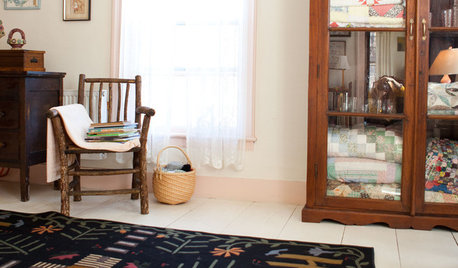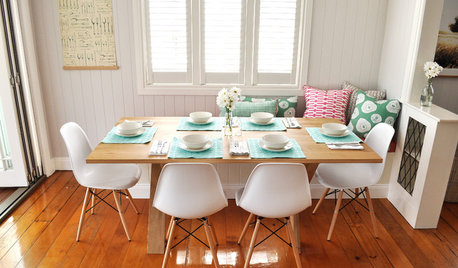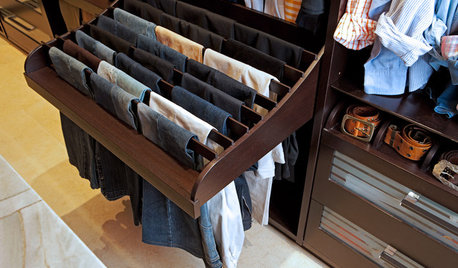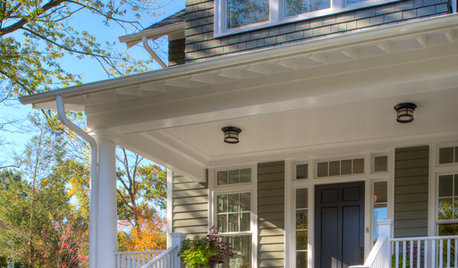Covering a compost pile...is the tarp really necessary?
Garnett Greene
7 years ago
Featured Answer
Sort by:Oldest
Comments (57)
- Garnett Greene thanked daninthedirt (USDA 9a, HZ9, CentTX, Sunset z30, Cfa)
Related Discussions
to tarp or not to tarp
Comments (4)I'm further north in the foothills between Seattle & Tacoma. I've done nothing different for my compost piles during this wintery blast. Yes, keep it covered because it doesn't hurt it, but it might if you uncover it. Your cover prevents over-saturation from excess rain as well as wind blown seed entering your compost. In our mild winter climate our annual weeds produce seeds nearly year round especially shotweed or peppergrass that I'll link below. The blog isn't mine. There will be heat loss tarp or not when composting. Turning it is necessary to keep a hot pile going, not the tarp. When you read about hot compost it will state that eventually there is no longer enough content to maintain heat. You can either add more nitrogen ingredients to heat again, or let it go through the cool phase to finish & cure. I've done it both ways & nowadays unless I'm eager to build biceps or burn calories I leave it alone. Corrine Here is a link that might be useful: shotweed or peppergrass weed...See MoreCovering the compost bin
Comments (4)A cover is a very good idea on a compost bin to keep excess water from saturating the mix and putting the digesting into an anaerobic condition which is what you had. The covers on my compost bin are simply a sheet of 4 x 9 T-111 siding cut in half (each bin is 4 x 4 x 4) with a piece of 2 x 4 screwed on one end to hook on the doors on the front of the bins. They work really well in aiding in controlling the amount of moisture in the material digesting away in the bins....See MoreCover With a Tarp?
Comments (19)I hope you're in a better mood, belgianpup--and I bet you are if temps are lower for you there like they are here in TN. Because man! I fell out laughing! Nothing like taking extreme examples of going to the extreme to criticize...going to extremes!! Ahem...whew...I guess it just struck my funny bone, gasp, giggle. Now, boys and girls, kimmsr is...dare I say it, right. A tarp won't seal off a pile from air, of course not. It blocks the pile AIR FLOW, or ventilation --see the post on passive aeration--oxygen doesn't just diffuse into a pile, it's pulled in. Normally, hot air rises from a pile and creates a vacuum effect at the bases and sides to entrain fresh air. It's kinda like a chimney effect. A tarp that retains that heat messes up the air flow and the hot humid air would collect in the bubble and fill it up, until the oxygen inside the pile was used up and aerobic bacteria died. I don't know how long it would take for hypoxic death of the aerobic bacteria, or whether the heat would kill weeds seeds better at the edges before the whole cycle collapsed on itself. My idea, which I was kicking around ONLY, on the spur of the moment, was, since I read on the internet that weed seeds died in only 15-20 minutes at 140 degrees, that slapping a tarp on a hot, hot pile for a mere hour might be enough to more thoroughly kill weed seeds. NOTE: this was specifically a hot finsh out scenario, the last hurrah of a well mixed addition of UCG and very finely whipped up leaves before the pile was left to mature. kimmsr has said elsewhere that it's not just the heat that kills weed seeds, but the whole process. BUT, heat has always worked for me, and I'm always looking for 'a better, faster' way to achieve my highly personal compost goals. Gentlemen, we have the technology. * *see UCG, OP grass clippings, weed whacker, garbage can, OP fall leaves, water and/or pee/aquarium water, sweat, thermometer, tarp...See MoreComposting bins- do I need to cover these? Oklahoma.
Comments (9)Those bins do look nice. I would add something in front to hold the material if you plan to go high with it. But not as high as the pallets. For me 3ft is plenty high enuff so I can reach over from any point. I started out to make pallet bins some years ago but ended up just using some old fencing to make a ring to hold the leaves and grass from blowing around. It works for me. It was much easier to haul home the wire fence. I do cover my piles with an old shower curtain to control the moisture level....See MoreAnnie (Georgia / USDA Hardiness Zone 8A)
7 years agoGarnett Greene thanked Annie (Georgia / USDA Hardiness Zone 8A)floral_uk z.8/9 SW UK
7 years agoGarnett Greene
7 years agoAnnie (Georgia / USDA Hardiness Zone 8A)
7 years agolast modified: 7 years agoGarnett Greene
7 years ago- Garnett Greene thanked daninthedirt (USDA 9a, HZ9, CentTX, Sunset z30, Cfa)
Garnett Greene
7 years agodaninthedirt (USDA 9a, HZ9, CentTX, Sunset z30, Cfa)
7 years agolast modified: 7 years agoGarnett Greene thanked daninthedirt (USDA 9a, HZ9, CentTX, Sunset z30, Cfa)idaho_gardener
7 years agoGarnett Greene
7 years agoGarnett Greene
7 years agofloral_uk z.8/9 SW UK
7 years agopatrick_walsh913
7 years agoLloyd
7 years agorgreen48
7 years agolast modified: 7 years agodaninthedirt (USDA 9a, HZ9, CentTX, Sunset z30, Cfa)
7 years agolast modified: 7 years agogumby_ct
7 years agodaninthedirt (USDA 9a, HZ9, CentTX, Sunset z30, Cfa)
7 years agolast modified: 7 years agogumby_ct
7 years agodaninthedirt (USDA 9a, HZ9, CentTX, Sunset z30, Cfa)
7 years agolast modified: 7 years agoLloyd
7 years agolast modified: 7 years agodaninthedirt (USDA 9a, HZ9, CentTX, Sunset z30, Cfa)
7 years agolast modified: 7 years agoLloyd
7 years agogumby_ct
7 years agolast modified: 7 years agoLloyd
7 years agogumby_ct
7 years agoLloyd
7 years agogumby_ct
7 years agodaninthedirt (USDA 9a, HZ9, CentTX, Sunset z30, Cfa)
7 years agolast modified: 7 years agoLloyd
7 years agogumby_ct
7 years agolast modified: 7 years agopatrick_walsh913
7 years agoLloyd
7 years agogumby_ct
7 years agorgreen48
7 years agolast modified: 7 years agoLaurie Mansell Dyer
7 years ago
Related Stories

GARDENING GUIDESGet on a Composting Kick (Hello, Free Fertilizer!)
Quit shelling out for pricey substitutes that aren’t even as good. Here’s how to give your soil the best while lightening your trash load
Full Story
GARDENING GUIDESHouzz TV: Make a Worm Bin for Rich Soil and Happy Plants
A worm-powered compost bin that can fit under a sink turns food scraps into a powerful amendment for your garden. Here’s how to make one
Full Story
THE HARDWORKING HOMEClever Ways to Rethink the Linen Closet
The Hardworking Home: Get rid of those toppling piles with these ideas for organizing bedding, towels and more
Full Story
FALL GARDENING5 Ways to Put Fall Leaves to Work in Your Garden
Improve your soil and yard the organic way with a valuable garden booster that grows on trees
Full Story
MOST POPULAR10 Strategies for Keeping Surfaces Clutter-Free
The universe wants your coffee table to become a clutter magnet — but you can fight back
Full Story
FIREPLACESDesign Workshop: Smart Ways to Store Wood Outdoors
Consider size, location, protection, air circulation and, of course, style for storing your firewood
Full Story
DECLUTTERINGDownsizing Help: How to Get Rid of Your Extra Stuff
Sell, consign, donate? We walk you through the options so you can sail through scaling down
Full Story
CLOSETSThe 15 Most Popular Closet Luxuries on Houzz
Turn distressing disarray into streamlined perfection with closet organizers and amenities like these
Full Story
MONTHLY HOME CHECKLISTSOctober Checklist for a Smooth-Running Home
You're due for some winterizing, like clearing rain gutters and stowing swimsuits — but leave time for a fun project
Full Story
GREEN BUILDINGOff the Grid: Ready to Pull the Plug on City Power?
What to consider if you want to stop relying on public utilities — or just have a more energy-efficient home
Full Story




idaho_gardener